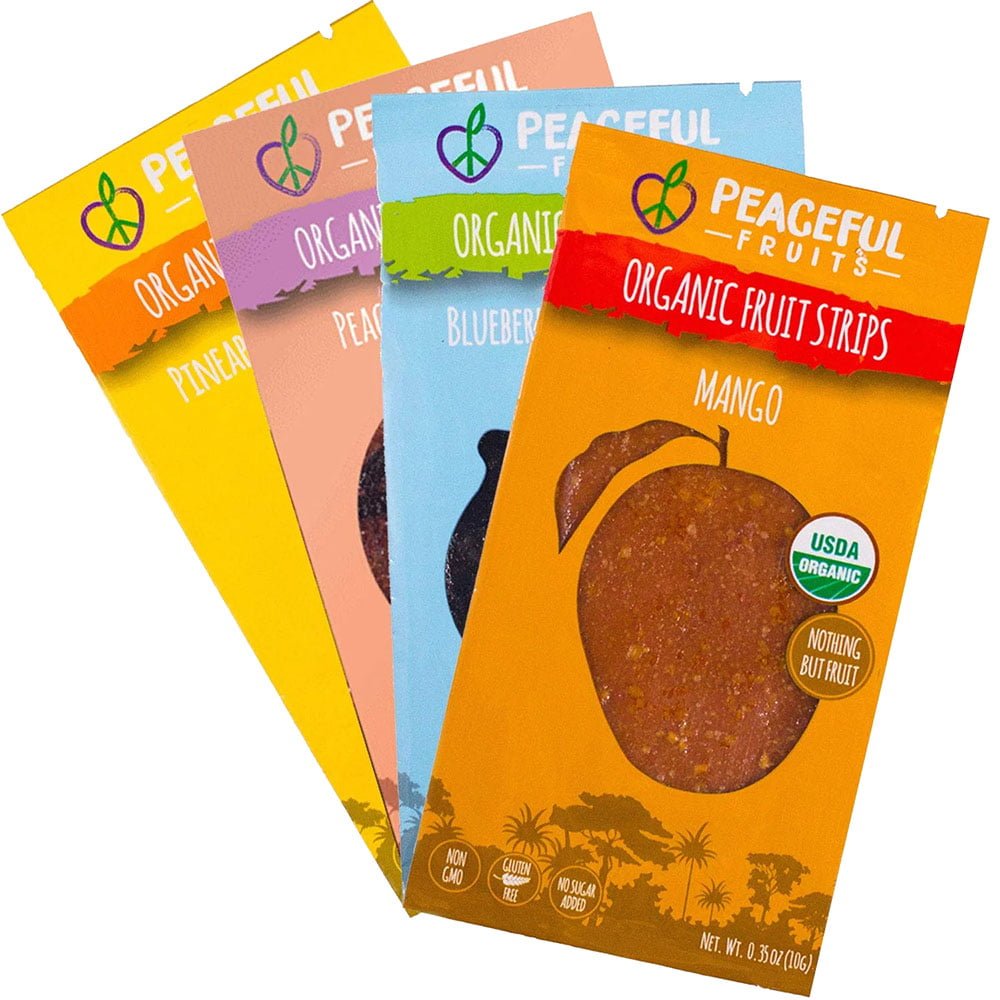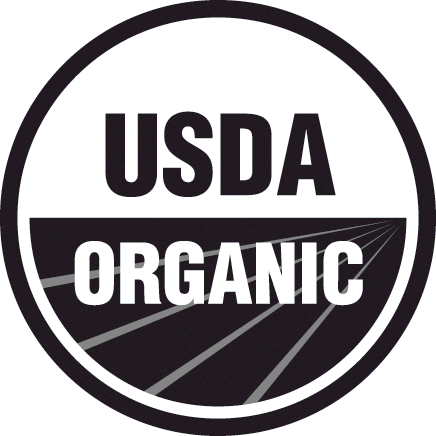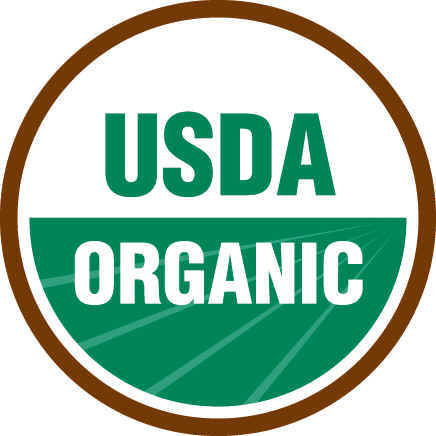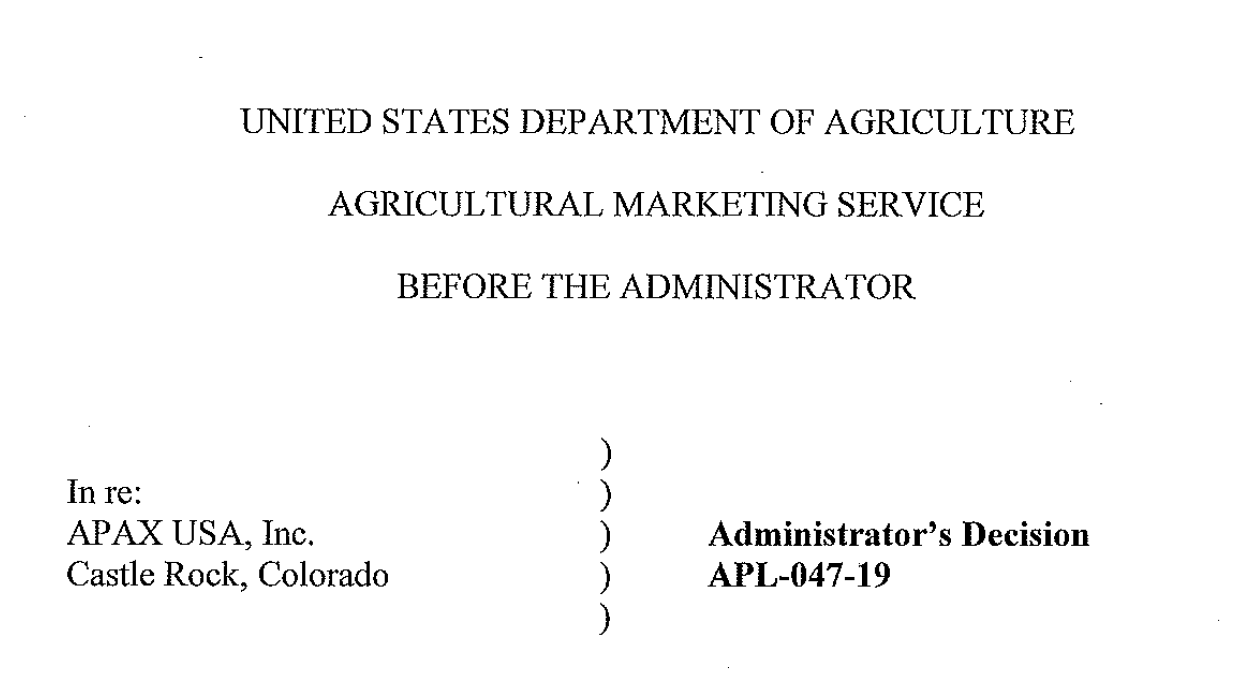No products in the cart.
USDA Organic Labeling
Introduction to USDA Organic Label Requirements | Organic USDA Labeling
The 'Certified Organic' label was developed to help consumers make decisions when purchasing food, and other items which claim to be organic. Claiming that you sell certified organic products has proven to be a long lasting source of consumer loyalty and preference. This blog is a basic overview of the USDA organic programs, and the use of the USDA organic seal on packaging.


The information contained in this blog is believed to be generally accurate as of the date of its creation. This blog is intended as general educational content about USDA organic products and the rules surrounding them. If you are developing packaging, use this blog post as a starting point for your own Investigation, and confirm current USDA requirements and guidance for your particular situation (which may fall within an exception, exclusion), which can change over time. It is always recommended to consult a compliance specialist. Official rules, regulations, and guidance about USDA organic labels can be found at www.usda.gov. Alright, with that said let's dive in!
In the United States, "organic" is a labeling term for food or agricultural products ("food, feed, or fiber") created in accordance with the USDA Organic Regulations, a database that defines standards that unify "cultural, biological, and mechanical practices." These standards for organic food labels promote resource cycling, promote ecological balance and conserve biodiversity. In addition to setting requirements for how organic agricultural products are grown, processed and handled, USDA National Organic Program also sets labeling requirements for these products. Labeling requirements are based on the percentage of organic ingredients in the product. If it is an agricultural product intended for human consumption, certification is required for the use of the term organic. Personal care products, textiles and dietary supplements fall outside the purview of the USDA. They may be certified for National Organic Program, but are not required by law.[1]


To make an organic claim or to use the USDA Certified Organic Seal and to be entered into the organic database, the final product must strictly adhere to production, handling, and labeling standards and undergo an organic certification process. The standards address various factors such as soil quality, animal husbandry practices and pest and weed control. Artificial fertilizers, sewage sludge, irradiation and genetic engineering cannot be used. Organic agricultural operations should ultimately maintain or improve soil and water quality, and conserve wetlands, woodlands, and wildlife.
USDA food label recognizes four types of organic production:


Crops
"Plants that are grown to be harvested as food, livestock feed, or fiber used to add nutrients to the field."


Livestock
"Animals that can be used in the production of food, fiber, or feed."


Processed/multi-ingredient products
"Items that have been handled and packaged (e.g. chopped carrots) or combined, processed, and packaged (e.g. bread or soup)."


Wild crops
"Plants from a growing site that is not cultivated."
Organic standards describe specific requirements that products must be tested by a USDA-accredited certifying agent before being labeled USDA Certified Organic.


Using the label for organic products


When developing the design for your client's packaging it is very important to treat regulatory seals (like the USDA seal) with caution, and only use the allowed versions of the seals. The use of the USDA organic label is highly regulated and controlled. It is very important to recommend that your client consult a compliance attorney and share everything with them before placing the seal on your product.
USDA Organic Labels (Allowed Versions)
Here are two versions of the seal which are allowed. These are the only two versions you should use. Do not try to elaborate, or "improve" the designs.


Black and White Version


Full Color Version
Downloadable USDA Organic Seal
Black and White USDA Organic Seal Files
Color USDA Organic Seal Files
- Color Organic Seal JPG
- Color Organic Seal AI
- Color Organic Seal SVG
- Color Organic Seal EPS
- Color Organic Seal PDF
USDA Organic Seal - Required Colors
The USDA specifies how to use the USDA organic seal including which colors should be used. The use of Pantone Matching System (PMS) colors will provide the most accurate colors.


Pantone
348 C
LAB Value 47-54 26
SRGB 0 132 61
HEX 00843D


Pantone
175 C
LAB Value 30 24 20
SRGB 107 53 41
HEX 6B3529
Additional Printing Rules
Common Mistakes
Below are some of the most common mistakes we see designers make designers make include the following.


1. Incorrect Colors and modified designs
To the left you'll see two errors. First the designer didn't use the colors or layer specified, they tried to "blend" seal into the client's design. Secondly if you look closely they modified the seal. You might be the most creative, artistic, and amazing designer out there, but this is one case where you shouldn't mess with things and just let it be.


2. Using the USDA Agency "logo" as a substitute
Well, it does say USDA but this is not the USDA organic Seal. No this is just the agency's logo, and it is not a substitute. Also be careful using this logo to imply any government approval, that can get you in hot water as well.
3. Using random stock imagery or clipart found on the internet










Something we see all the time, is the use of random variations of the seal. Do not use anything you find online at Shutterstock or other sites, these can get your client in big trouble and they're going to blame you in the end.
None of these 5 examples we are showing you here are permissible USDA organic seals. And putting them on your client's pouch could result in many thousands of dollars in fines, or having their product pulled from store shelves.
Organic Standards and Requirements


Crop Standards
USDA organic standards for organic crop production requires that:
- No prohibited substances should be applied to the soil for at least 3 years before the harvest of organic crops.
- Soil fertility and crop nutrients will be managed by tillage and cultivation methods, crop rotation and cover crops, supplemented with animal and crop waste materials and permitted artificial materials.
- Crop pests, weeds and diseases will be controlled mainly by management methods including physical, mechanical and biological controls. When these practices are not sufficient, approved biological, vegetable, or synthetic substances may be used in the national catalog.
- Organic seeds and other planting stock must be used in operations when available.
- The use of genetic engineering, ionizing radiation and sewage sludge is prohibited.[2]


Animal Feed Standards
Livestock and poultry standards apply to animals used to sell meat, milk, eggs and other animal products, labeled or presented as organic. Some requirements include:
- Dairy animals and animals for slaughter should be reared under organic management from the last third of pregnancy or after the second day of life for poultry.
- Non-organic dairies have a one-time opportunity to transition non-organic animals into organic production (over a 12-month period).
- Producers should feed livestock agricultural feed products that are 100 percent organic, but they can also provide approved vitamin and mineral supplements.
- Preventive management methods must be used to keep animals healthy. Manufacturers cannot stop treating sick or injured animals. However, animals treated with a prohibited substance cannot be sold as organic.
- Ruminants should be out in the pasture for the entire grazing season, but not less than 120 days. These animals should also get at least 30 percent of their food or dry matter intake (DMI) from pasture.
- All organic livestock and poultry need to be allowed outdoors all year round. Animals may only be temporarily confined due to documented environmental or health issues.[3]
Handling Standards
The USDA organic standards for handling require:
- All non-agricultural ingredients, whether synthetic or non-synthetic, must be allowed according to the National List of Allowed and Prohibited Substances.
- In a multi-ingredient product labeled as “organic,” all agricultural ingredients must be organically produced, unless the ingredient(s) is not commercially available in organic form and listed on Section 205.606.[4]
- Handlers must prevent the commingling of organic with non-organic products and protect organic products from contact with prohibited substances.[5]
Four Labeling Groups
100% Organic
Products made entirely with certified organic ingredients, methods and processing aids may be labeled as "100% organic" (including certified raw agricultural goods). It is used to label any product that contains 100% organic ingredients (except salt and water, which are considered natural). Most raw, unprocessed or at least processed farm crops can be labeled as "100 percent organic". In the "100 percent organic" category, products must be made from 100 percent certified organic ingredients. The label must include the name of the certifying agent and may include a USDA organic seal and/or a 100% organic claim.[6]
Organic
This category includes products that contain at least 95 percent organic ingredients (excluding salt and water). Up to 5 percent of the content of inorganic agricultural products and/or non-agricultural products may be on the National List (non-organic agricultural products and many non-agricultural products in the National List may be used only if they are commercially commercialized as organic). Additionally, the label must include the name of the certifying agent, and may include the USDA Organic Seal and/or the Organic Claim.[7]
Made with Organic
This category includes products containing at least 70 percent organically produced ingredients (excluding salt and water), with a number of broad constraints regarding ingredients containing non-organic parts.
For multi-ingredient products in the "Made with" organic category, at least 70 percent of the product must contain certified organic ingredients. The organic seal may not be used on the product, and the final product may not be displayed as organic - only three ingredients or ingredient categories may be indicated as organic. Any remaining materials do not need to be produced organically, but must be produced without any excluded methods (genetic engineering). All non-agricultural products should be included in the national list. For example, processed organic foods may contain some accepted non-agricultural ingredients, such as enzymes in yogurt, pectin in fruit jams, or baking soda in baked goods.[8]
Specific Organic Ingredient Listing
Multi-ingredient products with less than 70 percent certified organic ingredients would fall under "Specific Organic Ingredients" and do not need to be certified. These products may not display the USDA Organic Seal or use the word organic on the principal display panel. They may list certified organic ingredients in the ingredient list and the percentage of organic ingredients.
Specific Labeling Rules for Certified Food


Animal Feed
Livestock feed products may display on any package panel the following terms:
The statement, “100 percent organic” or “organic,” as applicable, to modify the name of the feed product.
The USDA seal.
The seal, logo, or other identifying mark of the certifying agent which certified the production or handling operation producing the raw or processed organic ingredients used in the finished product, Provided, That, such seals or marks are not displayed more prominently than the USDA seal.
The word, “organic,” or an asterisk or other reference mark which is defined on the package to identify ingredients that are organically produced. Water or salt included as ingredients cannot be identified as organic.
Livestock feed products must also comply with other Federal agency or State feed labeling requirements as applicable.[9]
Alcoholic Beverages
The organic alcoholic beverages must meet both USDA organic requirements and Alcohol and Tobacco Tax and Trade Bureau (TTB) regulations, including sulfite labeling requirements
- Any use of added sulfites makes the wine only eligible for the “made with” labeling category; may not use the USDA organic seal
- Sulfites may only be added to wine “made with” organic grapes; wine labeled as “made with” other organic fruit (e.g., apples) may not contain added sulfites
All organic alcohol labels must be reviewed by an organic certifying agent and the TTB.[10]
Track Back Audit Requirement
Organic certification mandates that the certifying inspector must be able to complete both "trace-back" and "mass balance audits" for all ingredients and products that share the organic label. A trace-back audit confirms the existence of a record trail from time of purchase/production through the final sale. A mass balance audit verifies that enough organic product and ingredients have been produced or purchased to match the amount of product sold. Each ingredient and product must have an assigned lot number to ensure the existence of a proper audit trail.[11]
Cases
These cases highlight the importance of strictly following USDA guidelines.


In APL-036-18 the company involved held an organic certification for it's products, but subsequently relocated its processing facilities to a new co-packing facility which did not hold an independent organic processing certificate, and the USDA ALJ court found the company violated the organic regulations and suspended it's organic certification.
In APL-047-19 Oregon Tilth Certified Oregon(OTCO) Act suspended the license of APAX USA Inc on the ground that Turmeric, Ginger, Garlic and Omega 3-6-9 products sold under brand name Feel Good Superfoods do not use an organic capsule. Moreover the products were not produced by NOP compliant co- manufacturer. The court denied the APAXUSA Inc appeal and held its organic certificate to remain suspended.




APL-005-19 A company sold its coconut product with USDA organic seal during the suspension of its organic license. The court held that company’s certification remains in suspension for minimum 120 days and also required to pay civil penalty of $12,000 for selling under USDA Organic label during the suspension of license.
In APL-70-20 NOFA-NY issued a notice of Denial of Certification after finding that the company had misrepresented that all of its products are certified organic and used USDA organic seal on its products when it wasn't certified organic. The court affirmed the notice of denial and denied organic certificate to the company.




In APL-08-20 The company had a organic certificate but it was suspended, they internally identified mangos as "organic" but claimed to have only sold them mangos as conventional. The court didn't believe them and held the company's certifications was to remain suspended.
Some more useful case summaries can be found here. Well that's it folks! We hope this blog has gotten your wheels turning regarding the complexities of the USDA organic programs. Using the USDA seal on your packaging is a compliance heavy endeavor and when in doubt hire a compliance expert to review all your work before going to print! The information in this blog post is provided as-is without any guarantee of accuracy. Always consult official government publications for the current regulations, and regulatory interpretation.
[1] http://www.ams.usda.gov/AMSv1.0/getfile?dDocName=STELDEV3004446&acct=nopgeninfo
[2] https://www.federalregister.gov/citation/65-FR-80548
[3] https://www.federalregister.gov/citation/65-FR-80548
[10] http://www.ams.usda.gov/AMSv1.0/getfile?dDocName=STELDEV3004446
Tags

